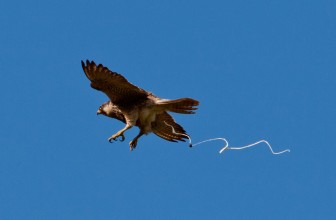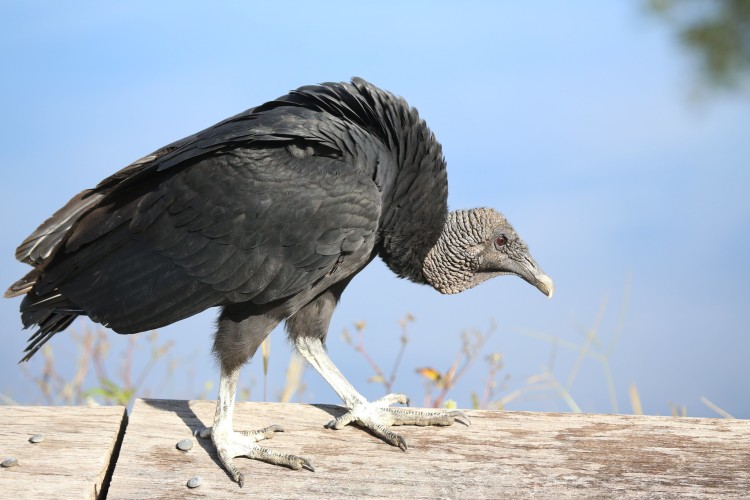Why Bird Poop Is White and Other Fun Feces Facts
Bird poop might not be the first thing that comes to mind when you think about fascinating bird facts, but it’s actually full of surprises. From why it looks the way it does to how it helps scientists learn more about bird behavior, bird droppings have a lot to say.
One of the most obvious features of bird waste is its color. Most of it is white. Birds excrete nitrogenous waste in the form of uric acid, not urea like mammals. Uric acid is pasty and white, and it's expelled along with fecal matter in one go. The darker part you see in the dropping is the feces, while the white part is uric acid (like urine). This combination comes out of a single opening called the cloaca, which handles both digestion and reproduction. So while bird waste contains both poop and pee, for the rest of this post we'll refer to this waste simply as poop.

Pooping Peregrine Falcon by RussellHarryLee [CC BY 2.0]
Another curious thing about bird poop is how often birds go. Birds don’t have bladders, and they don’t store waste for long. This is an adaptation for flight—carrying extra weight isn’t ideal when you need to stay airborne. So instead of holding onto waste, birds eliminate it frequently. Smaller birds with faster metabolisms poop more often than larger ones. A little songbird might go every 10 to 20 minutes, while larger birds like hawks or pigeons have slightly longer intervals.
Bird poop also has real-world applications, especially in science. Ornithologists can analyze droppings to learn about a bird’s diet, health, and even where it's been. Traces of insects, seeds, and other food sources can be found in poop samples, giving clues to a bird’s foraging habits. Some researchers use poop to study migratory patterns, testing for isotopes that reveal where the bird has traveled. Bird droppings can also be analyzed for pollutants like pesticides or heavy metals, offering a glimpse into environmental health. This is useful when caring for individual birds, as in rehabilitation, pet birds, and aviaries, as well as surveying the health of wild bird populations.

Black Vulture with white-streaked legs by cuatrok77 [CC BY-SA 2.0]
Some vultures have a unique way of using their waste to stay cool! They poop on their legs. This behavior is called urohidrosis. When a vulture defecates on its legs, the liquid waste evaporates and helps lower the bird’s body temperature, similar to how sweating works in humans. The uric acid in the waste also has a bleaching effect, which is why some vultures have white-streaked legs. It’s not the most glamorous cooling system, but it’s effective, especially in the hot, arid environments where many vultures live.
While most of us see bird poop as a nuisance—especially if it ends up on a car or outdoor furniture—it plays an important ecological role. Guano, the accumulated droppings of seabirds (or bats), is an extremely rich natural fertilizer. It’s high in nitrogen, phosphate, and potassium, which are essential nutrients for plant growth. In some places, guano harvesting has been a major industry. Coastal islands where seabirds nest can develop thick layers of guano over centuries, supporting agriculture far from the ocean. Guano of seabirds has been used as an agricultural fertilizer for over a thousand years! Guano of birds like the Brown Pelican, Peruvian Booby, and Guanay Cormorant (with a name taken from the Spanish word for guano!) has been used for agriculture in South America.
So, while bird poop might seem like nothing more than an annoyance, it’s actually a product of evolutionary efficiency and even scientific utility. It reveals insights into a bird’s biology, environment, and behavior. And yes, it’s still annoying when it hits your windshield—but at least now you know what makes it so interesting.





Comments
Leave a comment
Thank you!